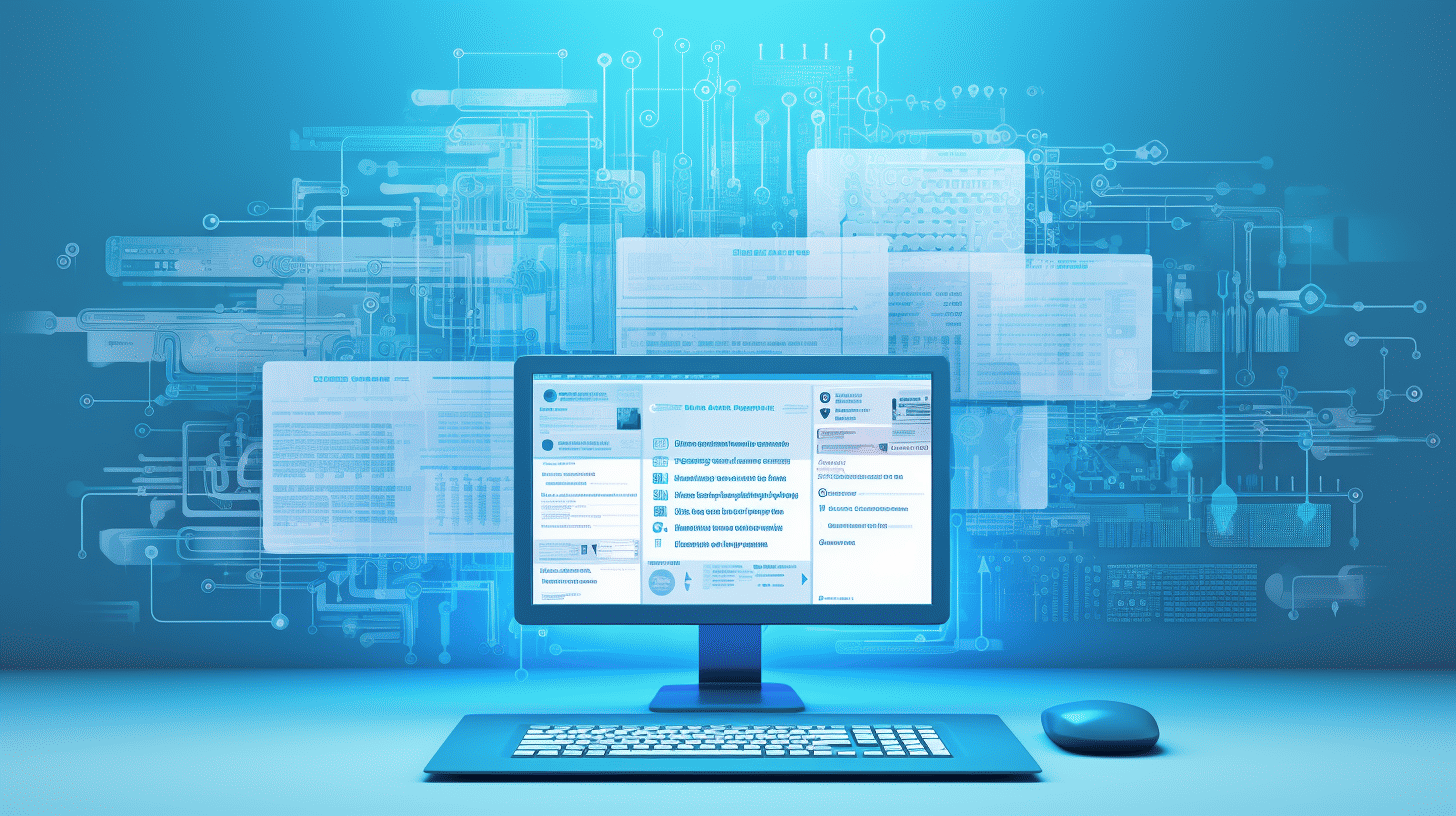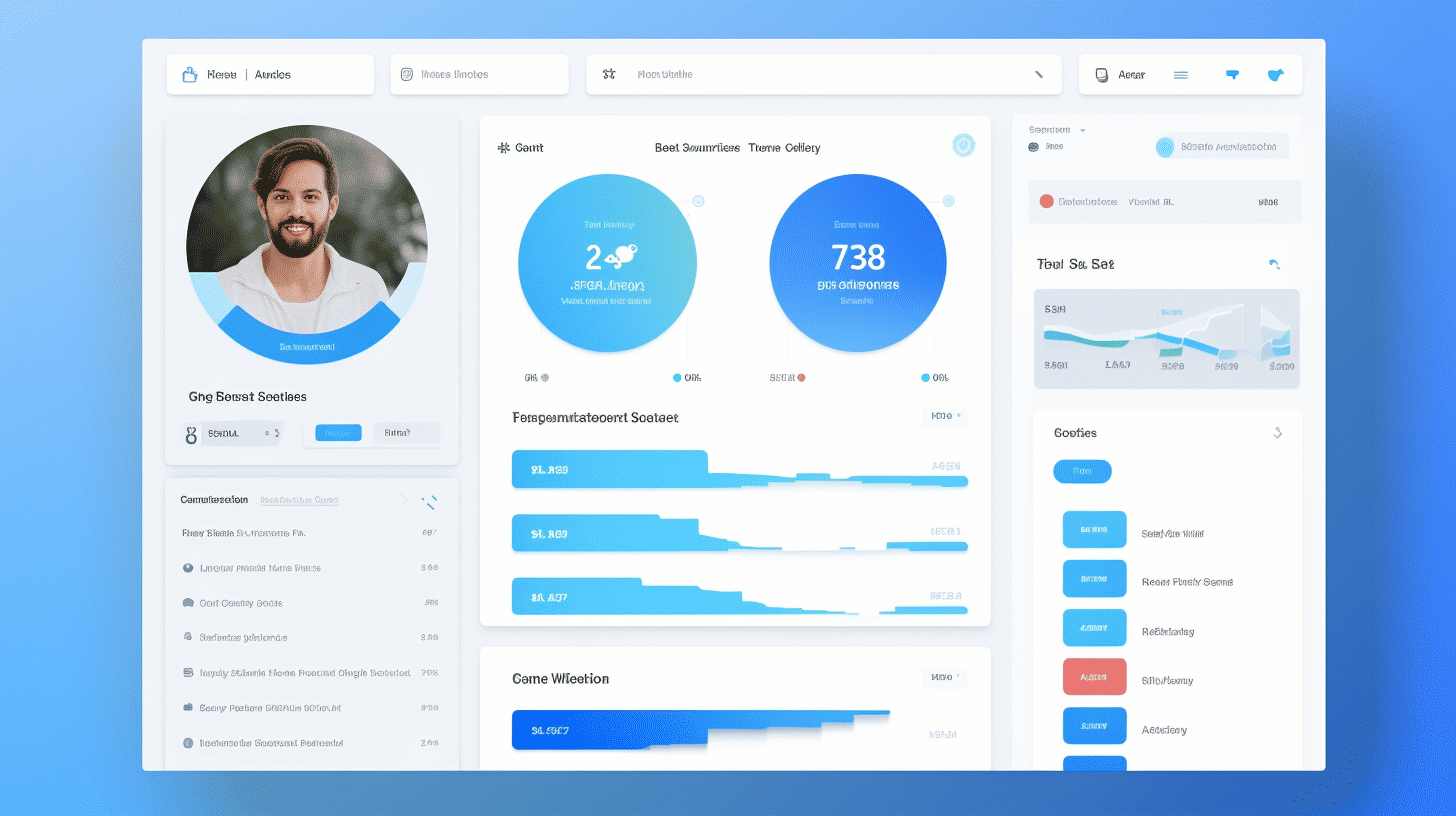在當今快節奏的數位世界中,管理 WordPress 網站可能是一項耗時的任務。從確保網站效能和安全到保持內容更新,責任很快就會累積起來。然而,有一種解決方案可以幫助簡化管理流程並釋放寶貴的時間:自動化。
自動化 WordPress 管理任務在網站所有者和管理員中越來越受歡迎。透過利用自動化的力量,您可以簡化日常流程,降低人為錯誤的風險,並提高網站的整體效率。
在本文中,我們將探討 WordPress 管理的重要性和自動化的好處。我們還將重點介紹一些可以輕鬆自動化的關鍵任務,並提供成功實施自動化策略的專家提示。因此,無論您是經驗豐富的 WordPress 使用者還是剛開始使用,請繼續閱讀以了解自動化如何徹底改變您的網站管理體驗。 😊
WordPress 管理的重要性
WordPress 是各種規模的企業使用的最受歡迎的內容管理系統 (CMS) 之一。從小型部落格到大型電子商務網站,WordPress 提供了一系列的特性和功能,使其用途廣泛且用戶友好。然而,僅僅擁有一個 WordPress 網站是不夠的。正確的 WordPress 管理對於您在線業務的成功至關重要。讓我們探討一下有效管理 WordPress 網站至關重要的三個主要原因。
🚀 網站效能
管理良好的 WordPress 網站意味著更好的網站效能。未優化且載入時間緩慢的網站會導致用戶失望和高跳出率。這最終會影響您的搜尋引擎排名,因為搜尋引擎優先考慮快速加載的網站。透過實施有效的 WordPress 管理技術,您可以確保您的網站針對速度和效能進行了最佳化。這包括定期更新外掛程式和主題、優化映像和利用快取技術。透過花時間妥善管理您的 WordPress 網站,您可以為訪客提供無縫、高效的使用者體驗。
💡 使用者體驗
WordPress 管理的關鍵組成部分是維持積極的使用者體驗。您的網站的易用性和導航直接影響訪客如何與您的內容互動。直覺且使用者友善的介面可延長瀏覽時間並提高轉換率。有效的 WordPress 管理包括定期審核您的網站是否有斷開的連結、過時的內容,並優化您的整體網站架構。透過定期更新和改進您的 WordPress 網站,您可以為使用者提供流暢愉快的體驗,提高他們的滿意度並鼓勵他們重複造訪。
🔒 安全注意事項
確保您的 WordPress 網站的安全至關重要。隨著網路威脅和惡意攻擊的不斷增加,忽視 WordPress 安全性可能會對您的業務造成嚴重後果。管理不善的網站容易受到駭客攻擊、惡意軟體感染和資料外洩。定期更新 WordPress 核心文件、外掛程式和主題、使用強大而獨特的密碼以及實施安全外掛程式是保護您的網站的重要步驟。透過積極管理 WordPress 網站的安全性,您可以保護您的網站和寶貴的使用者資料免受潛在威脅。
總而言之,WordPress 管理的重要性怎麼強調也不為過。透過優先考慮網站效能、使用者體驗和安全性,您可以確保您的 WordPress 網站以最佳方式運作並有效地在線上展示您的品牌。因此,請花時間妥善管理您的 WordPress 網站並享受良好維護的線上形象帶來的好處。
可以自動化的 WordPress 管理任務
🔐 保持您的 WordPress 網站順利運行可能是一項艱鉅的任務,尤其是在日常維護和管理方面。然而,透過正確的工具和策略,您可以自動執行許多這些任務,從而節省寶貴的時間並確保您的網站保持安全和最新。
以下是一些可以自動執行的關鍵 WordPress 管理任務:
備份和還原📦
對於任何網站所有者來說,最重要的任務之一就是定期備份。如果不幸發生資料遺失或安全漏洞,最近的備份可以起到救命的作用。值得慶幸的是,有幾種外掛程式和服務可以自動執行 WordPress 網站的備份和復原過程。一些流行的選擇包括:
- 上升氣流增強版 – 該外掛程式可讓您安排自動備份並將其儲存在各種遠端位置,例如 Dropbox、Google Drive 或 Amazon S3。此外,它還提供一個簡單的一鍵恢復過程,使得在發生任何事故時可以輕鬆恢復您的網站。
- 噴射背包 – 除了提供一系列其他有用的功能外,Jetpack 還包括自動備份和復原功能。您可以選擇備份頻率和異地儲存備份的選項。
更新🔄
出於安全性和效能原因,保持 WordPress 核心、外掛和主題更新至關重要。但是,手動檢查更新並實施更新可能會很耗時。值得慶幸的是,有一些工具可以自動執行此流程,確保您的網站始終保持最新。一些流行的選擇包括:
- 管理WP – 此服務可讓您從單一儀表板管理多個 WordPress 網站。它會自動檢查更新並可以一次性將其應用到您的所有網站,從而省去了單獨更新每個網站的麻煩。
- 無限WP – 與 ManageWP 類似,此服務可讓您在一個地方管理多個 WordPress 網站。它提供自動更新通知和簡單的介面,以便輕鬆應用更新。
安全監控
保證你的 WordPress 網站的安全至關重要。定期的安全監控可以幫助您識別漏洞並採取必要的措施來保護您的網站免受潛在威脅。自動化安全監控可以節省您的時間並確保您領先攻擊者一步。一些流行的選擇包括:
- 蘇庫裡 – 該外掛程式提供強大的安全功能,包括自動掃描惡意軟體和安全漏洞。它還提供防火牆來阻止惡意流量,並提供在偵測到可疑活動時設定警報的選項。
- 字柵欄 – Wordfence 是一款受歡迎的安全性插件,提供即時監控、惡意軟體掃描和防火牆保護。它可以自動掃描您的網站以查找潛在威脅並向您發送電子郵件通知。
內容安排🗓️
提前規劃和安排您的內容可以幫助您保持一致的發佈時間表並保持井然有序。自動化內容安排可以確保您的內容在所需的時間上線,無需人工幹預。一些流行的選擇包括:
- 協同計劃 – 這個強大的行銷日曆工具可以讓您提前規劃和安排您的內容。您可以為每篇文章設定所需的發布日期和時間,CoSchedule 將負責自動發布。
- 緩衝 – 雖然 Buffer 主要被稱為社群媒體管理工具,但它也提供安排部落格文章的功能。您可以撰寫內容,設定發布日期,Buffer 會自動將其發佈到您的 WordPress 網站。
自動執行這些 WordPress 管理任務可以讓您騰出時間專注於經營網站更重要的方面。無論是確保資料備份、保持網站更新、監控安全還是安排內容,利用自動化工具都可以讓您作為網站所有者的生活變得更加輕鬆。擁抱自動化並讓科技處理日常任務,讓您專注於最重要的事情—創造有價值的內容並與您的受眾互動。
自動化 WordPress 管理的重要技巧
管理 WordPress 網站可能是一項艱鉅的任務,尤其是當您的網站發展壯大並且您發現自己需要兼顧多項職責時。好消息是,自動化工具可以幫助簡化您的 WordPress 管理任務,節省您的時間並確保您的網站順利運作。以下是自動化 WordPress 管理的一些重要技巧:
選擇可靠的自動化工具
當涉及自動化 WordPress 管理時,選擇易於使用且提供所需功能的可靠工具至關重要。選擇自動化工具時需要考慮以下幾點:
- 相容性: 確保您選擇的自動化工具與您的 WordPress 版本和您使用的任何外掛程式相容。
- 使用者友善的介面: 尋找提供使用者友善介面的工具,使您可以輕鬆導航和設定自動化任務。
- 顧客評論: 查看不同自動化工具的評論,以了解它們的可靠性和有效性。
- 支援和更新: 選擇定期更新並在遇到任何問題時提供可靠客戶支援的自動化工具。
實施備份和復原系統
為了應對任何不可預見的事件或資料遺失,備份您的 WordPress 網站至關重要。自動化備份和復原流程可確保您不會錯過任何備份,並可在需要時輕鬆還原您的網站。請考慮以下情況:
- 計畫備份: 設定自動備份並定期運行,確保您的網站資料始終受到保護。
- 異地儲存: 將您的備份儲存在異地或雲端儲存服務中以增強安全性。
- 一鍵恢復: 尋找提供一鍵恢復選項的自動化工具,以便在必要時輕鬆將您的網站恢復到以前的狀態。
保持你的 WordPress 網站自動更新
定期更新您的 WordPress 核心、主題和外掛程式對於您網站的安全性和效能至關重要。自動進行這些更新可以節省您的時間並確保您的網站保持最新狀態。請考慮以下情況:
- 自動核心更新: 啟用 WordPress 核心的自動更新,以確保您始終執行最新版本。
- 外掛和主題更新: 使用自動化工具,您可以安排和自動執行已安裝的外掛程式和主題的更新。
- 相容性檢查: 尋找在自動更新外掛程式和主題之前執行相容性檢查的自動化工具,以降低衝突或問題的風險。
設定自動安全檢查
保護您的 WordPress 網站免受安全威脅至關重要。自動化安全檢查可以幫助您主動識別和解決漏洞。請考慮以下情況:
- 惡意軟體掃描: 使用執行常規惡意軟體掃描的自動化工具來偵測任何惡意程式碼或漏洞。
- 安全通知: 設定自動通知,以便在您網站上發現任何安全問題或可疑活動時發出警報。
- 暴力保護: 考慮提供自動暴力破解保護、偵測和阻止重複登入嘗試的自動化工具。
規劃內容安排
自動化內容安排可以幫助您保持井然有序並確保一致的發佈時間表。以下是一些提示:
- 自動化插件: 使用外掛程式可以提前安排您的內容,指定發布日期和時間。
- 社群媒體整合: 尋找與社群媒體平台整合的自動化工具,讓您可以同時安排跨不同管道的貼文。
- 內容日曆: 利用內容日曆提前規劃和安排您的內容,確保發布策略連貫且精心策劃。
透過這些自動化 WordPress 管理的頂級技巧,您可以簡化網站的操作並專注於線上形象的更具策略性的方面。選擇可靠的自動化工具,實施備份和復原系統,保持您的網站自動更新,設定自動安全檢查,並規劃您的內容安排。透過利用自動化的力量,您可以節省時間、提高安全性並增強 WordPress 網站的整體效能。
了解自動化的局限性
歡迎來到令人著迷的自動化世界! 🤖 雖然自動化為各行業帶來了許多好處和進步,但必須承認,它所能實現的功能也存在一定的限制。在本節中,我們將探討其中的一些限制,包括人工監督的需要、自動化的潛在錯誤以及定期檢查的必要性。那麼,就讓我們一起深入探索自動化的邊界吧! 🚀
人類監督
自動化系統可能強大而高效,但它們仍然需要人工監督以確保最佳性能。人類擁有機器無法複製的獨特技能和判斷力。以下是人類監督在自動化系統中至關重要的幾個原因:
- 決策: 自動化旨在遵循預先定義的規則和演算法,但在某些情況下,人的判斷是必不可少的。例如,在複雜而不可預測的情況下,人類可以根據經驗、直覺和道德考量來適應並做出決策。
- 錯誤檢測與糾正: 雖然自動化旨在最大限度地減少錯誤,但它並非萬無一失。人類在識別和糾正自動化過程中可能出現的錯誤方面發揮著關鍵作用。憑藉分析和排除故障的能力,人類可以發現機器可能忽略的問題。
- 不可預見的情況: 自動化系統旨在有效地處理日常任務,但在面臨意外情況時可能會遇到困難。當面對不熟悉或不可預測的情況時,人類有能力適應並找到創造性的解決方案。
自動化的潛在錯誤
即使經過仔細的規劃和實施,自動化系統也無法避免錯誤。必須意識到這些潛在的陷阱,以減輕其影響。以下是自動化系統可能遇到的一些常見錯誤:
- 錯誤輸入: 自動化嚴重依賴準確的數據輸入。如果輸入系統的資訊不正確或不完整,則可能導致錯誤的結果或操作。在啟動自動化流程之前,人類需要仔細檢查輸入,以最大限度地降低出錯的風險。
- 缺乏情境意識: 自動化系統根據預先定義的規則和演算法運作。但他們可能缺乏理解其營運所在更廣泛背景的能力。這種限制可能導致人類本來可以避免的錯誤決定或行為。
- 對外在因素的依賴: 自動化系統通常依賴外部因素,例如網路連線或資料可用性。如果這些依賴關係被破壞或損害,就會影響自動化的效能和可靠性。人類需要警惕監控這些外在因素,以確保順利運作。
定期檢查的必要性
自動化系統不是「設定後就忘記」的解決方案。它們需要定期檢查以確保其繼續準確、高效地運行。以下是定期檢查至關重要的幾個原因:
- 系統更新與維護: 自動化系統非常複雜,可能需要更新以解決錯誤、安全漏洞或引入新功能。定期檢查可以進行系統維護和更新,以確保自動化系統順利運作。
- 效能監控: 定期檢查提供了監控系統效能並發現任何潛在問題或瓶頸的機會。透過密切監控自動化,人類可以做出必要的調整或改進,以提高其效率和效力。
- 適應不斷變化的需求: 隨著業務需求的發展,自動化系統也需要相應調整。定期檢查可以讓人類評估自動化是否仍符合組織的目標,並進行必要的修改以保持其相關性。
總之,雖然自動化徹底改變了產業並簡化了流程,但它並不是一個完美的解決方案。人工監督、對潛在錯誤的認識以及定期檢查對於最大限度地發揮自動化的優勢並最大限度地減少其局限性至關重要。透過在自動化和人類參與之間取得適當的平衡,組織可以利用科技的力量,同時確保最佳結果。因此,讓我們擁抱自動化的可能性,但不要忘記人類在自動化成功過程中所扮演的角色! 💪🌟
結論
總之,透過自動化簡化 WordPress 管理對於網站所有者和管理員來說是一個重大改變。透過利用自動化工具和實施高效流程,曾經耗費寶貴時間和資源的任務現在可以輕鬆完成。從備份到更新、安全監控到內容調度,自動化可以提供更簡化和高效的管理體驗。
然而,值得注意的是,雖然自動化可以簡化 WordPress 管理的許多方面,但不應完全依賴它。仍需要人工監督和定期檢查,以確保一切順利進行並發現可能出現的任何潛在問題。
那為什麼不利用自動化提供的好處呢?透過高階託管 WordPress 雲端託管平台 Managed-WP,您可以進一步簡化 WordPress 管理。有了專家 24/7/365 的全天候問題解決服務,您可以放心,您的網站在有能力的人手中。體驗 Managed-WP 提供的自由和靈活性,立即徹底改變您的 WordPress 管理。
使用 Managed-WP.™ 輕鬆開始簡化您的 WordPress 管理 點擊此處開始.
常見問題解答
- 有哪些流行的 WordPress 管理自動化工具?
一些流行的 WordPress 管理自動化工具包括 WP-CLI、ManageWP、InfiniteWP、MainWP 和 Jetpack。
- 自動化如何幫助簡化 WordPress 管理?
自動化可以節省時間和精力,幫助簡化 WordPress 管理。它可以自動執行更新、備份、安全掃描、內容發佈和效能優化等任務,使網站所有者能夠專注於業務的其他重要方面。
- 使用自動化工具管理 WordPress 是否有風險?
雖然自動化工具可以大幅簡化 WordPress 管理,但必須謹慎。錯誤配置的自動化或過度依賴沒有監控的自動化可能會導致錯誤、潛在的安全漏洞或意外後果。定期審查和監督至關重要。
- 我可以根據自己的需求自訂自動化設定嗎?
是的,許多自動化工具允許自訂設定以滿足個人需求。使用者可以選擇要自動化的任務、自動化的頻率以及自動化的特定條件或觸發器。建議根據站點要求檢查並調整設定。
- 是否有任何免費的自動化外掛程式可用於 WordPress 管理?
是的,有免費的自動化外掛程式可用,例如 Advanced Cron Manager 和 WP Scheduled Posts,它們為諸如計劃內容發布等任務提供自動化功能。然而,高級自動化工具通常提供更廣泛的功能和支援。



















